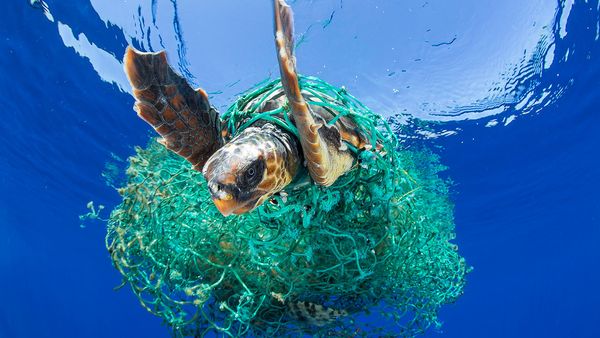Here is an article that gives a simple and crisp news about The Ocean Cleanup Project. Check out!
The Ocean Cleanup Project is a nonprofit engineering environmental organization based in the Netherlands, that develops technology to extract plastic pollution from the oceans and intercept it in rivers before it can reach the ocean.
ABOUT The Ocean Cleanup Project
The organization conducts scientific research into oceanic plastic pollution. It was founded in 2013 by Boyan Slat, a Dutch-born inventor-entrepreneur of Croatian and Dutch origin who serves as its CEO.
HISTORY
Slat proposed the cleanup project and supporting system in 2012. In October, Slat outlined the project in a TED-talk. The initial design consisted of long, floating barriers fixed to the seabed, attached to a central platform shaped like a manta ray for stability. The barriers would direct the floating plastic to the central platform, which would remove the plastic from the water. Slat did not specify the dimensions of this system in the talk.
Design of the ocean clean up project
The latest Jenny design uses a towed, floating structure. The structure acts as a containment boom. A permeable screen underneath the float catches subsurface debris. It incorporated an 800 m (2,600 ft) barrier and added active propulsion to allow the system to operate at higher speed. Crewed boats tow the U-shaped barrier through the water at 1.5 knots. The ship can also be steered to areas with higher waste densities. In July 2022, the floating system reached the milestone of 100,000 total kg of plastic removed from the Great Pacific Garbage Patch.

Places where the The Ocean Cleanup Project has been implemented
- In 2015, scale model tests were conducted in controlled environments. Tests took place in wave pools at Deltares and MARIN. The purpose was to test the dynamics and load of the barrier, when exposed to currents and waves, and to gather data for continued computational modeling.
- A 100-metre segment went through a test in the North Sea, off the coast of the Netherlands in the summer of 2016. The purpose was to test the endurance of the materials chosen and the connections between elements. The test indicated that conventional oil containment booms could not endure the harsh environments the system would face.
- On September 9, 2018, System 001 (nicknamed Wilson in reference to the floating volleyball in the 2000 film Cast Away) deployed from San Francisco. The ship Maersk Launcher towed the system to a position 240 nautical miles off the coast, where it was put through a series of sea trials. It consisted of a 600 m (2,000 ft) long barrier with a 3 m (9.8 ft) wide skirt hanging beneath it.
- In August 2020, the third Interceptor was deployed in Santo Domingo, in the Dominican Republic.
- On July 2021, a new design called System 002, also known as “Jenny”, was deployed in the Great Pacific Garbage Patch for testing. In October, the organization announced that the system had gathered 28,000 kilograms (62,000 lb) of trash. In October, the project announced plans for System 003, which will span 2.5 km.
THE GREAT PACIFIC GARBAGE PATCH
The Great Pacific Garbage Patch is the largest accumulation of ocean plastic in the world and is located between Hawaii and California. Scientists of The Ocean Cleanup have conducted the most extensive analysis ever of this area.
The Great Pacific Garbage Patch (GPGP) is the largest of the five offshore plastic accumulation zones in the world’s oceans. It is located halfway between Hawaii and California.

PLASTIC ACCUMULATION
It is estimated that 1.15 to 2.41 million tonnes of plastic are entering the ocean each year from rivers. More than half of this plastic is less dense than the water, meaning that it will not sink once it encounters the sea.
ESTIMATION OF SIZE
The GPGP covers an estimated surface area of 1.6 million square kilometers, an area twice the size of Texas or three times the size of France.
TOTAL MASS AND COUNT
The mass of the plastic in the Great Pacific Garbage Patch (GPGP) was estimated to be approximately 80,000 tonnes, which is 4-16 times more than previous calculations. This weight is also equivalent to that of 500 Jumbo Jets.
